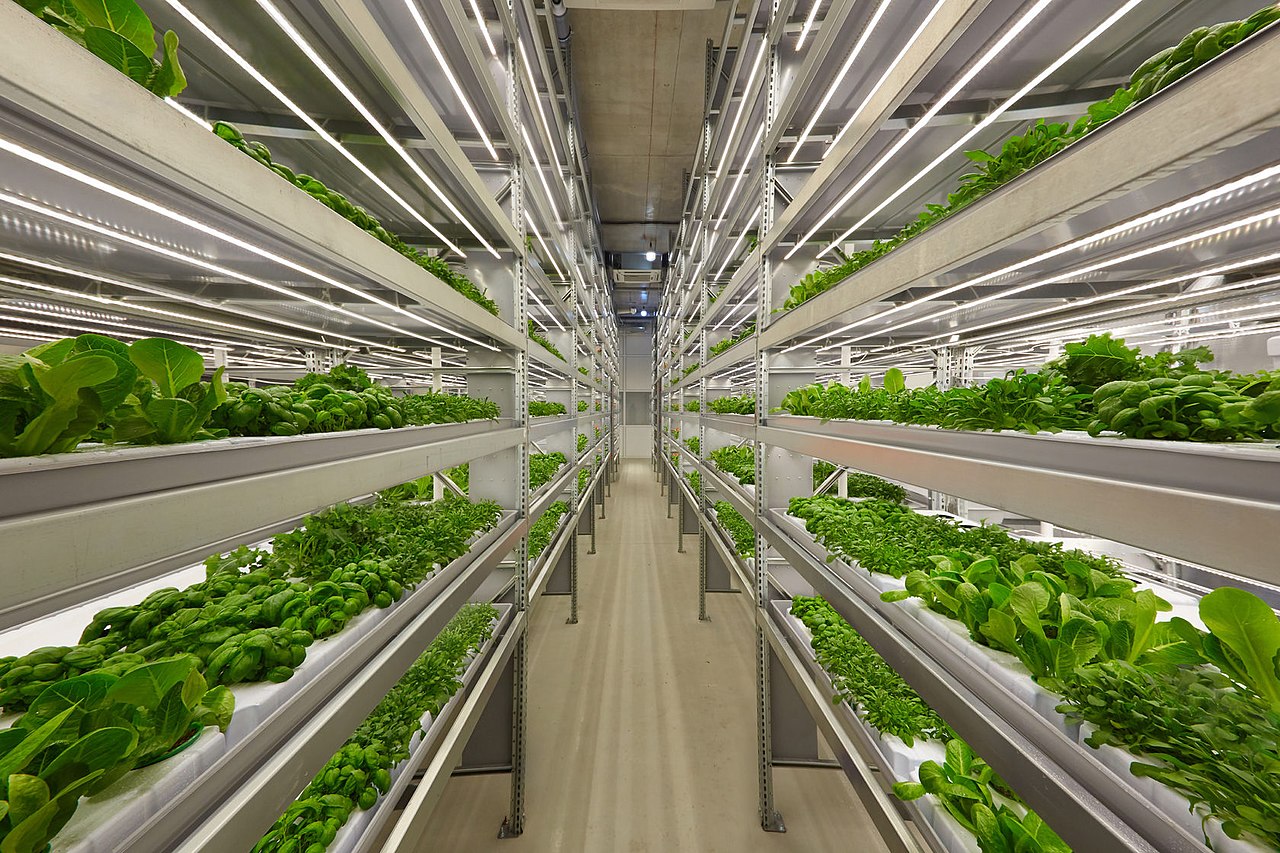 iFarm, Finland | https://creativecommons.org/licenses/by-sa/4.0/deed.en
iFarm, Finland | https://creativecommons.org/licenses/by-sa/4.0/deed.en
Farming Away Emissions for a More Secure America
Greenhouse gas (GHG) emissions from the agriculture industry make up roughly 10% of total GHGs in the US. GHGs from agriculture, and other sources, contribute to our planet’s warming, also known as the greenhouse effect. As the planet warms, however, our climate changes, resulting in extreme heat, drought, worsening storms, intense flooding, and wildfires. These impacts are not conducive to productive farming and have wide-ranging national security implications. As such, US policymakers should consider incentivizing two alternative farming methods that adapt agriculture for a changing climate and mitigate carbon emissions: vertical farming and sustainable agricultural practices. Doing so will reduce carbon emissions, ensure there’s food to eat, and make America more secure.
Vertical farming, which consists of vertically stacked rows of hydroponically- and aeroponically-grown food, uses repurposed urban infrastructure. Vertical farming utilizes land in closer proximity to urban markets, thereby reducing carbon emissions associated with transporting goods to markets. Additionally, indoor climate controls make this type of farming less susceptible to the effects of a changing climate, such as extreme heat and droughts. This allows for farming in areas that are either traditionally impossible or deemed not sustainable due to climate concerns.
However, vertical farming has some drawbacks. Because of its energy intensive nature, vertical farming must be coupled with energy-efficient technologies and clean energy sources to fully recognize the reduction in carbon emissions. Additionally, vertical farms are costly to start, but as more companies invest in these vertical start-ups, they become cheaper. Finally, vertical farming is not designed for mass production of fruits, vegetables, and grains. However, because vertical farming isn’t susceptible to climate-induced shocks—drought and flooding—additional acres are available from repurposing urban infrastructure, and farmers can control the climate to produce year-round. As a result, yields are not necessarily that different from conventional methods.
Yet, not all of America’s crop needs can be met with vertical farming; other sustainable methods must be employed. Some of those methods include rotating crops, promoting greater biodiversity, pest and fertilizer management, agroforestry, and precision farming. Agroforestry, for example, is designed to address loose soil concerns in drier regions by planting trees alongside crops, which help to serve as point-source carbon sinks when the crops are harvested. Used alongside vertical farming, these sustainable practices address some of the drawbacks of vertical farming while also addressing the climate impacts of conventional farming.
The US Department of Agriculture (USDA) does not currently provide subsidies for vertical farming; although, they do provide funding for research and host workshops on the future of the industry. To incentivize the adoption of these alternative-farming methods, the USDA could extend current farm subsidies to include vertical farming. Conventional farming has received over $424.4 billion in subsidies since the 1990s, primarily for export commodities, and some of that funding could be redirected or expanded through various grant programs, like the Specialty Crop Block program or the Farmers Market Promotion program.
Carbon-intensive farming contributes to climate change, and climate-induced disasters make the US less secure. Both vertical and sustainable farming practices can be used to mitigate the impacts of climate change by decreasing emissions and waste from traditional large-scale commercial farms. Without a dramatic reduction in carbon emissions, the threat of climate change will continue to grow along with all of the dangerous security risks.





